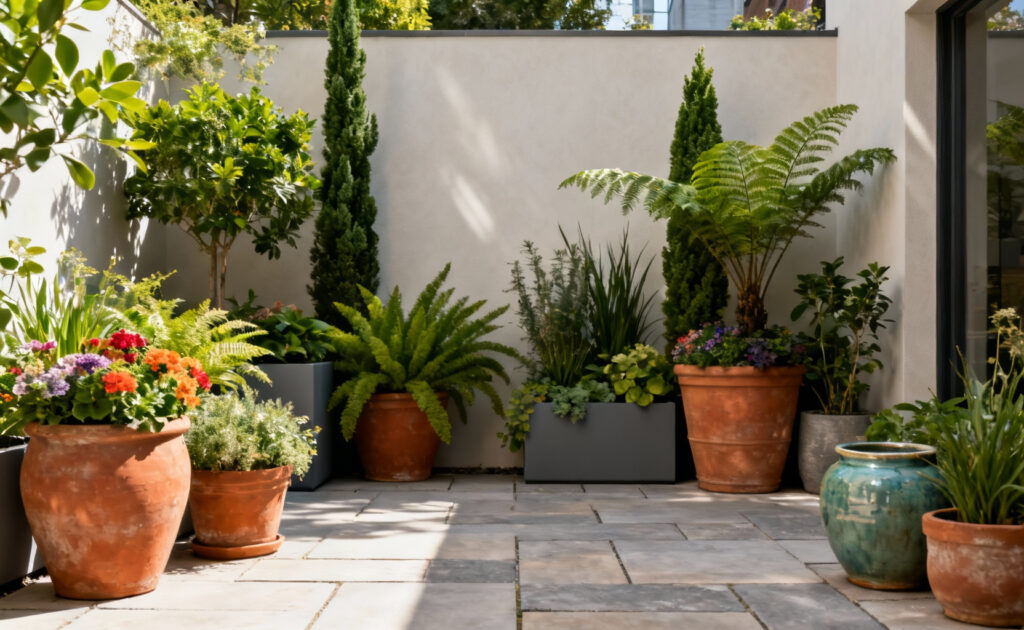Most people see a stunning outdoor space on TV and assume it’s the result of a single, massive, and impossibly expensive overhaul. The design shows repeat it constantly. Here’s what they’re not telling you: From my work as a landscape architect and outdoor furniture designer, the most breathtaking, livable backyards I’ve ever seen didn’t happen overnight. They evolved.
Forget the myth that you need an army of contractors for a grand reveal. I’ve seen more sustainable, beautiful results emerge from a thoughtful, progressive strategy than from any blank-check project. These 20 transformative backyard ideas are grounded in real-world principles of bioclimatic design and year-round functionality—the very things that turn a patch of grass into a true extension of your home. We’ll build from simple, impactful first steps to advanced, ecosystem-level integrations that let you work with nature, not against it.
Getting Started with Essential Backyard Transformations (Part 1)
Let’s begin where real transformation happens: with smart, foundational moves. These initial steps are about laying the groundwork, focusing on high-impact enhancements that give you immediate functional and aesthetic returns. This is how you begin to see your yard not as a separate space, but as the first room beyond the walls of your house.
1. Strategically Position Potted Greenery for Instant Visual Appeal and Flexibility
The fastest way to breathe life into an outdoor space is with well-chosen containers. Think of them as movable architecture. At its most basic, this is just a single, beautiful pot with a plant that loves its new home, instantly adding a splash of life to a patio corner. The real magic is its flexibility—you can change your mind, move it with the seasons, and experiment without commitment.
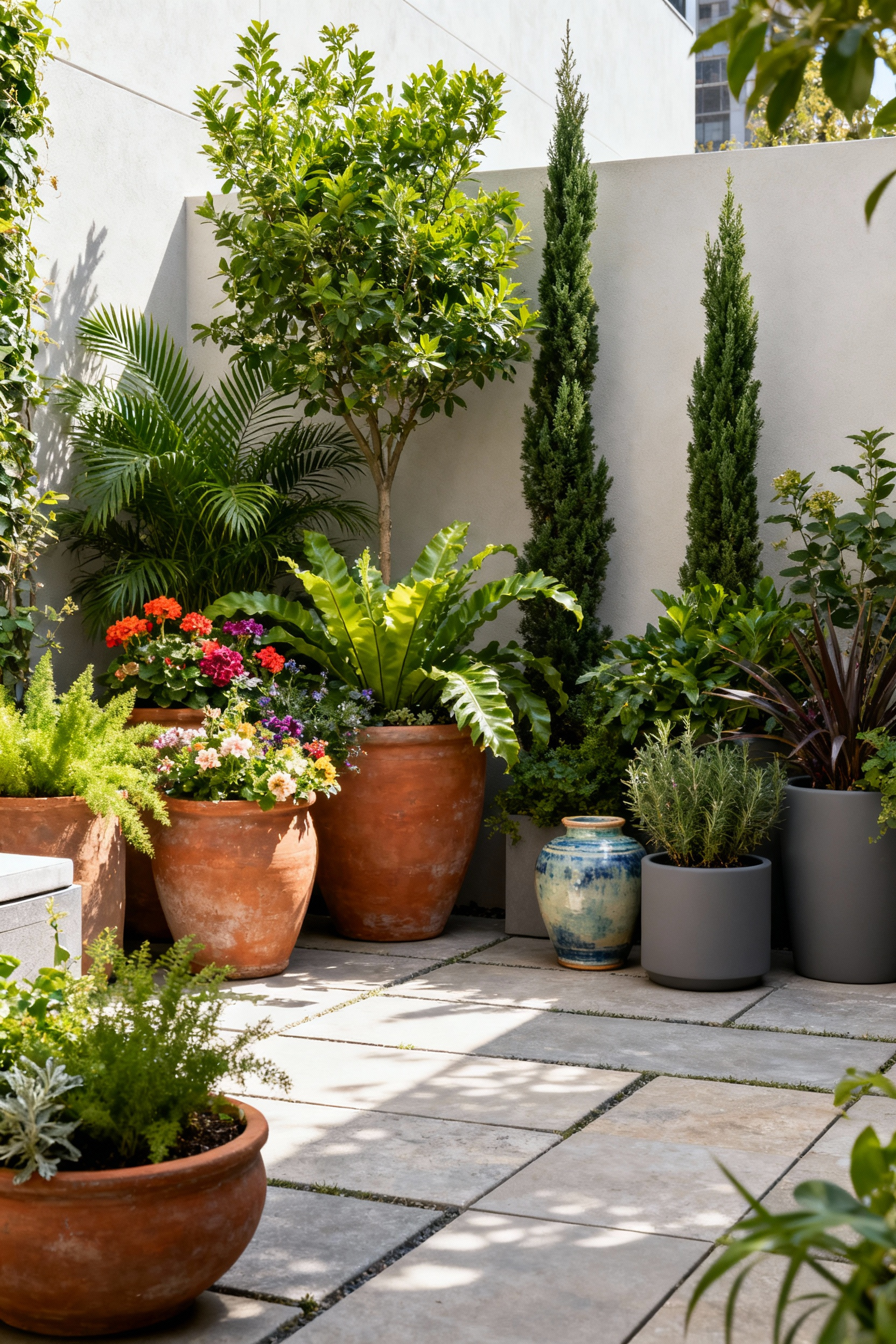
As you get more comfortable, start thinking in groups. Clustering pots of different sizes and textures creates a far more compelling visual story than single pots scattered about. This is how you start to soften hard edges and define zones. From my work in furniture design, I’ve learned that a thoughtful grouping of planters can anchor a seating area just as effectively as an outdoor rug. It signals “this is a place to gather.”
2. Install Targeted Low-Voltage Landscape Lighting to Accentuate Key Features and Enhance Evening Ambiance
Your backyard shouldn’t just disappear when the sun goes down. Low-voltage lighting is how you give it a second life after dark. The simplest approach is to use path lights for safety and a couple of uplights to highlight a favorite tree or an interesting stone wall. Right away, you’ve added hours of usability and a layer of quiet drama to your evenings.

The next step is to start painting with light. Instead of just illuminating things, create layers. Use downlighting from a pergola to mimic moonlight on the plants below. Graze a textured surface like brick or bark with light to bring out its character. The goal is to reveal the garden’s nighttime personality, creating an atmosphere that draws you outside for a quiet drink or conversation with friends.
3. Establish Defined Garden Beds with Functional Edging for Structural Clarity and Neater Aesthetics
Defined garden beds are the key to bringing a sense of order to the beautiful chaos of a garden. At first, this is just about creating a clean line between lawn and planting. Simple spade-cut edges or basic plastic edging does the trick, containing mulch and making your lawn look instantly tidier. It’s the visual equivalent of a clean haircut.

As you refine the space, consider the edging material as a design element itself. A crisp line of steel edging offers a modern, almost invisible border, while stone or brick pavers can add rustic charm that connects to your home’s architecture. Here’s what’s interesting: the shape matters. Gentle curves can guide the eye through the landscape, creating a sense of flow and mystery that a simple straight line just can’t match.
4. Incorporate a Small Self-Contained Water Feature for Tranquil Auditory Ambiance and Sensory Enrichment
Nothing changes the feeling of a space quite like the sound of moving water. A small, self-contained water feature is an incredibly simple way to introduce this sensory layer. You can start with a tabletop fountain that requires nothing more than an outlet. It immediately provides a focal point and its gentle sound helps mask less desirable noises like traffic or neighbors.

When you’re ready for something more integrated, place a larger standalone feature where you’ll appreciate it most—near a patio or seating area. Here, the material becomes part of the landscape narrative, whether it’s a glazed ceramic urn or a natural-looking basalt column. Just make sure the pump is correctly sized. What you want is a soothing burble, not a noisy gush that makes conversation difficult. It’s a subtle but powerful way to make your backyard feel like a true retreat.
Getting Started with Essential Backyard Transformations (Part 2)
Continuing with foundational elements, this section is about shifting your mindset. It’s about making choices that build a resilient, beautiful landscape from the ground up—one that works with your local environment, not against it. This is where your backyard starts to develop its own unique, self-sustaining character.
5. Select Drought-Tolerant Native Plants for Sustainable Low-Maintenance Landscaping and Ecological Benefit
Here’s the most important shift you can make: choose plants that actually want to live where you live. Native, drought-tolerant plants are adapted to your soil and climate, which means they thrive with less water, no fertilizer, and minimal fuss once established. This is the ultimate “work smart, not hard” backyard strategy. They don’t just save you time and money; they actively support local pollinators and wildlife, creating a healthier ecosystem right outside your door.

Moving beyond simply plugging in a few native plants, start thinking about creating plant communities. Group plants with similar water needs together—a practice we call hydrozoning—so your irrigation is targeted and efficient. Design for year-round interest by mixing textures, foliage colors, and bloom times. Pair the stiff, architectural form of a Yucca with the soft, flowing movement of native grasses. This approach turns a collection of plants into a cohesive, dynamic landscape that has something to offer in every season.
Elevating Your Outdoor Sanctuary: Intermediate Design Techniques (Part 1)
With a solid foundation in place, we can now start adding layers of function and sophistication. These next ideas are about turning your backyard into a series of purposeful outdoor rooms—spaces designed for living, cooking, and connecting. This is where the line between indoors and out truly begins to blur.
6. Design an Integrated Outdoor Kitchenette with Counter Space and Grilling Facilities for Elevated Al Fresco Dining Experiences
Taking outdoor cooking beyond a lonely grill on the grass is a game-changer. An integrated kitchenette becomes the heart of your outdoor entertaining space. Start with the essentials: a quality built-in grill and durable counter space on either side. You need a dedicated zone for prep and plating. For materials, think granite, sealed concrete, or stainless steel—anything that can stand up to weather and grease without fuss.

As you develop the idea, bring in the amenities that reduce trips inside. A small sink is invaluable. Under-counter storage for tools and platters keeps things tidy. What I tell my clients is to think about the flow. The grill should be close enough to the dining area for conversation, but positioned so smoke doesn’t bother your guests. And don’t forget lighting. Good task lighting over the grill is a non-negotiable for anyone who wants to cook after sunset.
7. Construct a Pergola or Trellis System to Articulate Outdoor Seating Areas and Offer Stylish Sun-Dappled Shade
A pergola is the simplest way to create the feeling of a room outdoors. It’s an architectural frame that defines a space—for dining, for conversation—without walling it in. The open rafters cast beautiful, shifting patterns of light and shadow, providing relief from the harshest sun without completely blocking the sky. It instantly makes a patio feel more intimate and intentional.
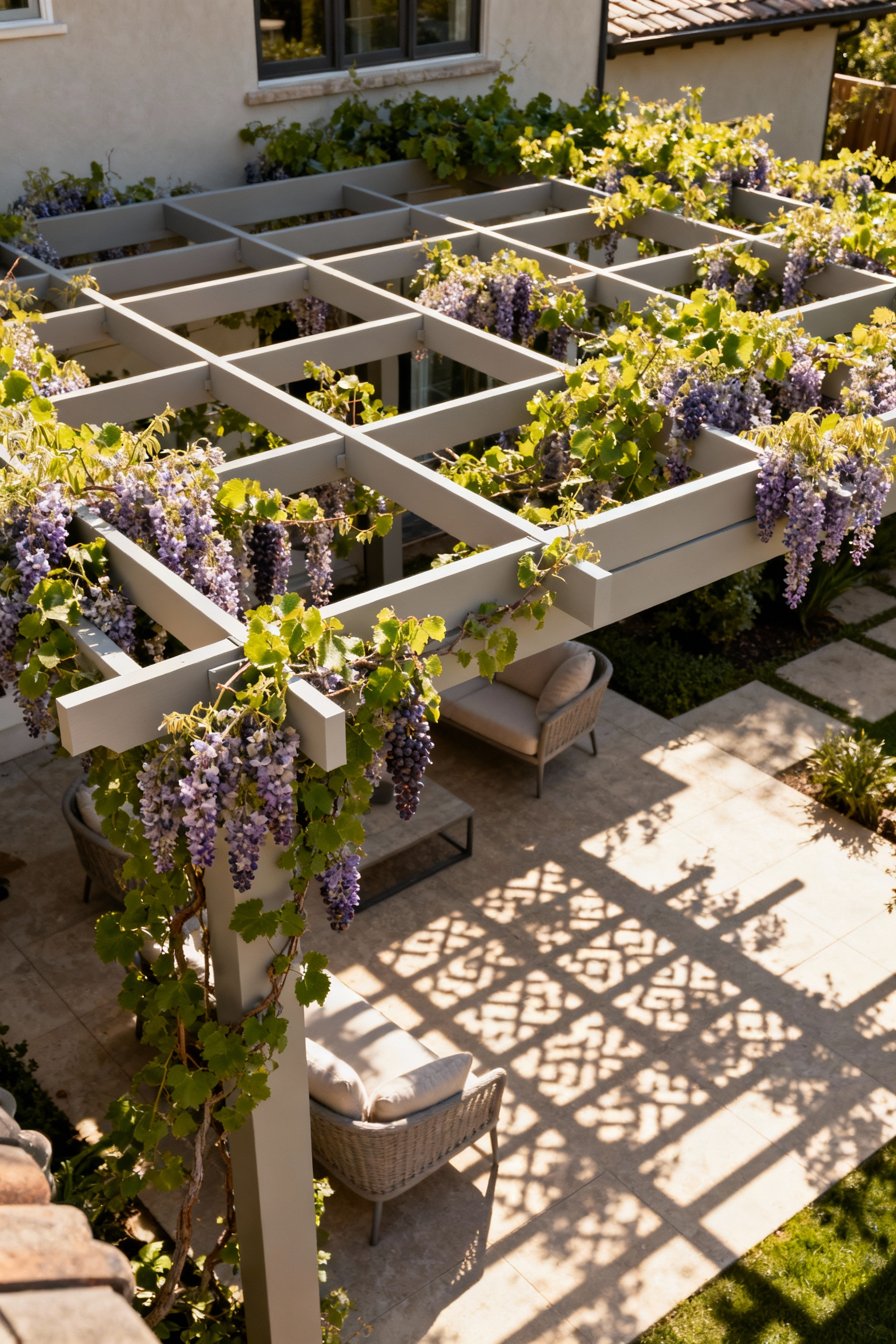
To take it a step further, integrate the pergola with your home’s architecture, perhaps extending it directly from the house to create a seamless transition. The material choice—warm cedar, low-maintenance aluminum—helps set the tone. For greater function, consider adding a retractable canopy or adjustable louvers. This gives you dynamic control over sun and shade, turning it into a truly versatile, three-season space that responds to the weather in real time.
8. Implement Permeable Paving Solutions for Pathways and Patios to Improve Stormwater Management and Reduce Runoff
Let’s talk about what’s underfoot. Instead of conventional concrete or pavers that shed water and contribute to runoff, permeable surfaces allow rain to filter through into the ground. It’s a fundamentally smarter way to build. Permeable pavers, gravel, or specially designed grids allow rainwater to soak in naturally, recharging groundwater and reducing the strain on storm drains. It’s a small change with a huge ecological benefit.
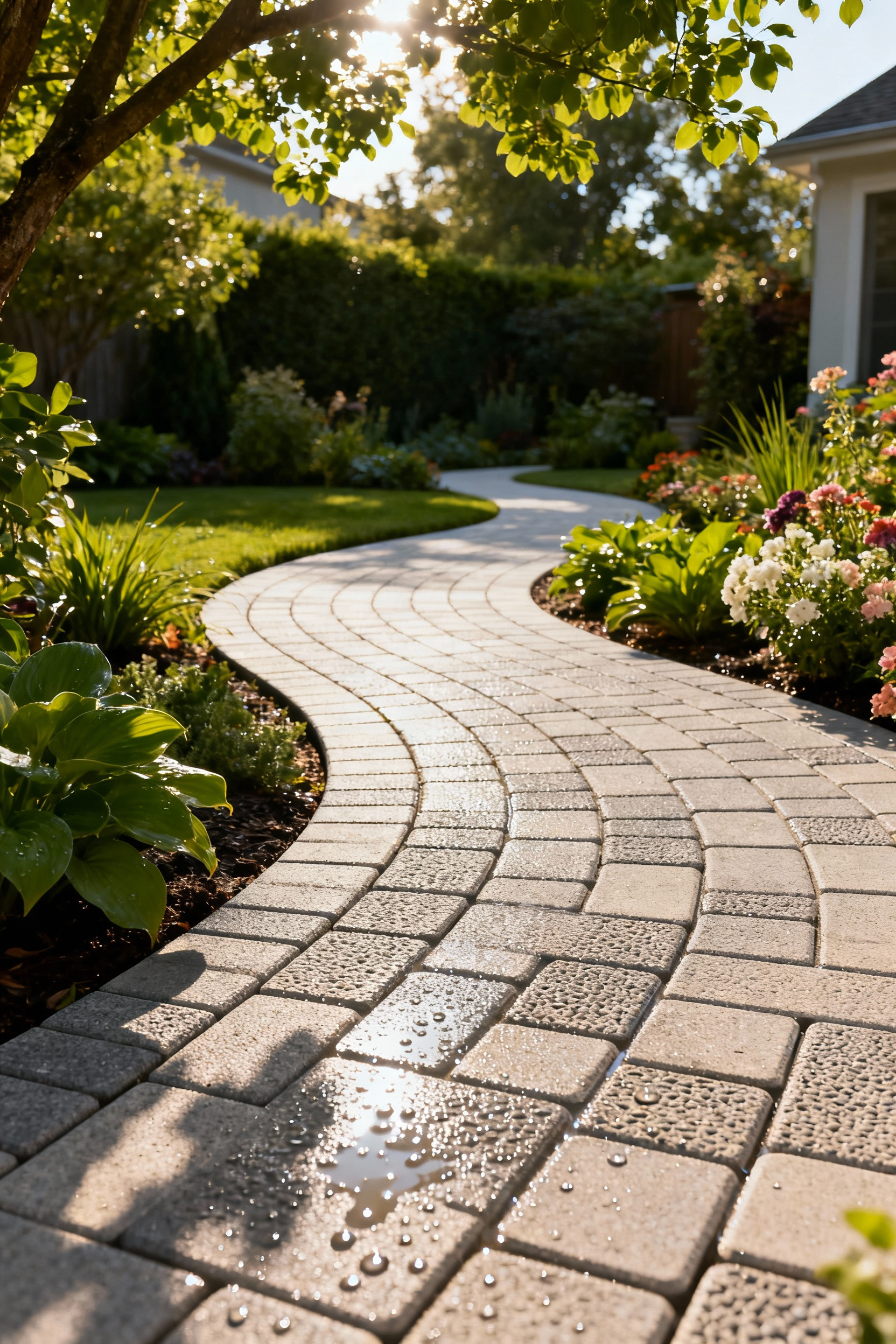
The real sophistication comes in the system’s design. A proper permeable installation isn’t just about the surface; it’s about the engineered sub-base of layered gravel that holds water and allows it to percolate slowly. This isn’t just good for the environment; it’s good for your yard. It prevents pooling water on your patio and helps reduce erosion. It’s an invisible technology that makes your landscape more resilient and sustainable.
9. Curate a Diverse Palette of Native Plants to Enhance Biodiversity, Support Local Wildlife, and Minimize Watering Requirements
We touched on natives earlier, but now let’s go deeper. It’s about curating a palette of plants that work together to create a living system. Instead of thinking about individual plants, think about creating layers like you’d find in a natural woodland: a canopy of small native trees, an understory of shrubs, and a ground layer of perennials and grasses. This diversity is what builds resilience.

When you design this way, you create a habitat. A continuous sequence of blooms feeds pollinators from spring through fall. The right plants provide food and shelter for birds and beneficial insects that will, in turn, help control pests. You’re not just planting a garden; you’re re-weaving a small piece of the local ecological fabric. Your backyard becomes a vibrant, living space, not a sterile, high-maintenance landscape.
Elevating Your Outdoor Sanctuary: Intermediate Design Techniques (Part 2)
Now we layer in intelligence. The modern outdoor sanctuary isn’t just beautiful; it’s smart. By integrating technology thoughtfully, we can create landscapes that are more resource-efficient, lower-maintenance, and perfectly tuned to the needs of both the plants and the people enjoying them.
10. Integrate Smart Irrigation Systems with Weather Sensors for Optimized Water Usage and Sustained Plant Health
The old set-it-and-forget-it sprinkler timer is one of the most wasteful devices in any home. Smart irrigation is the answer. Instead of watering on a rigid schedule, these systems adapt. They use real-time weather data—factoring in rainfall, temperature, and even wind—to deliver water only when and where it’s needed. This isn’t just about saving water and money; it’s about healthier plants that aren’t constantly over or under-watered.
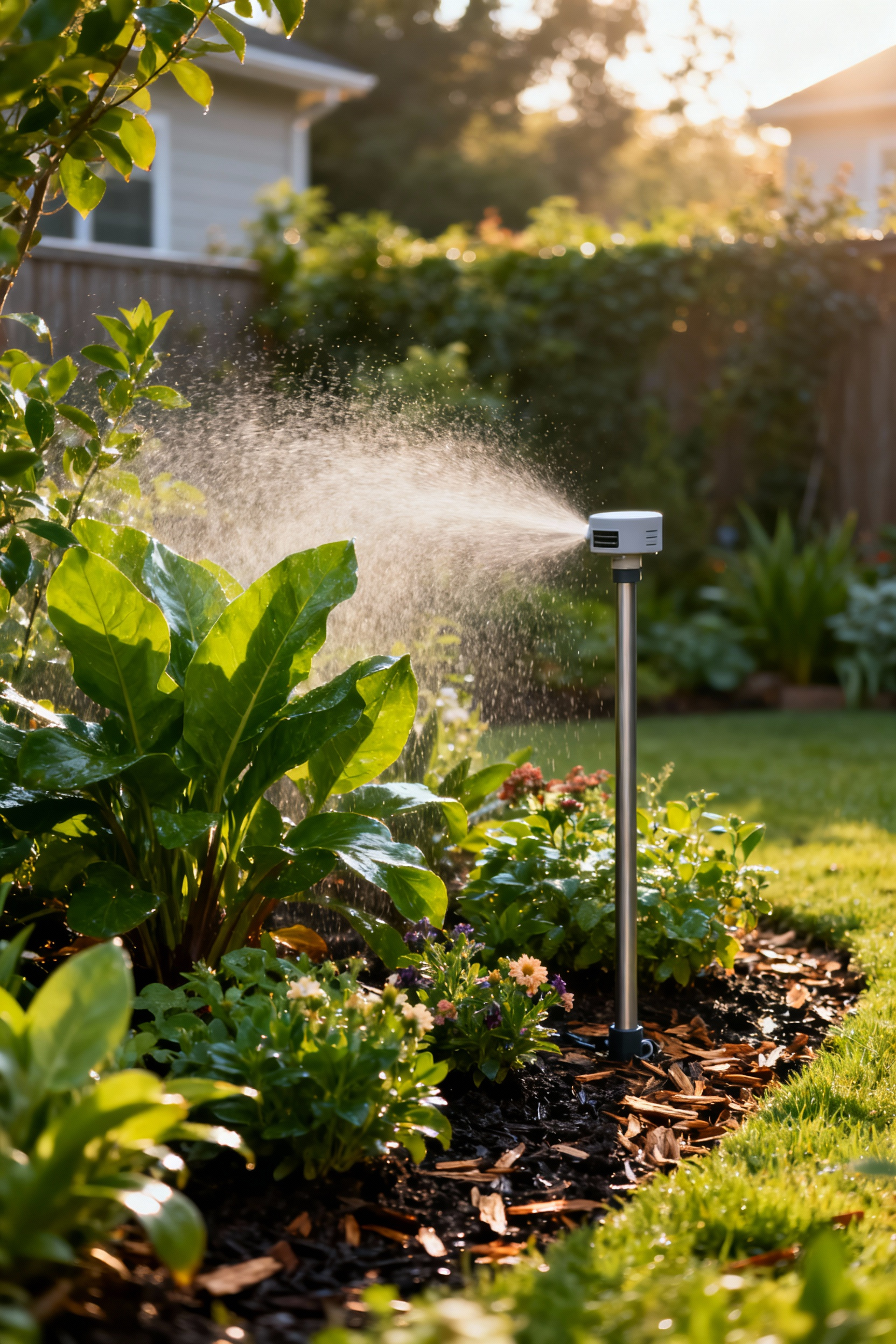
To truly optimize, you can add soil moisture sensors directly in your garden beds. Now the system isn’t just guessing based on weather; it knows the exact moisture level at the root zone. I’ve seen this play out in my own designs: a smart system can manage a zone of thirsty vegetables completely differently from an adjacent bed of drought-tolerant natives. It creates a self-regulating ecosystem that thrives with minimal intervention, keeping your landscape vibrant while drastically reducing your water footprint.
Advanced Ecosystem Integration: Professional Backyard Strategies (Part 1)
Now we move from designing rooms to designing entire systems. These professional strategies are about creating a holistic backyard that functions as a single, cohesive, and high-performing ecosystem. This is where meticulous planning and a deep understanding of natural processes yield a truly transformative result.
11. Develop a Multi-Zonal Master Plan for Holistic Backyard Functionality, Seamless Circulation, and Visual Cohesion
Here it is: the single most important step most people skip. Before you buy a single plant or paver, you need a master plan. A master plan is a map of your intentions. It divides your backyard into functional ‘zones’—a dining zone, a quiet retreat, a play area—and, crucially, figures out how they connect. It considers how you’ll move between spaces, what you’ll see from inside your house, and where the sun falls at different times of day.
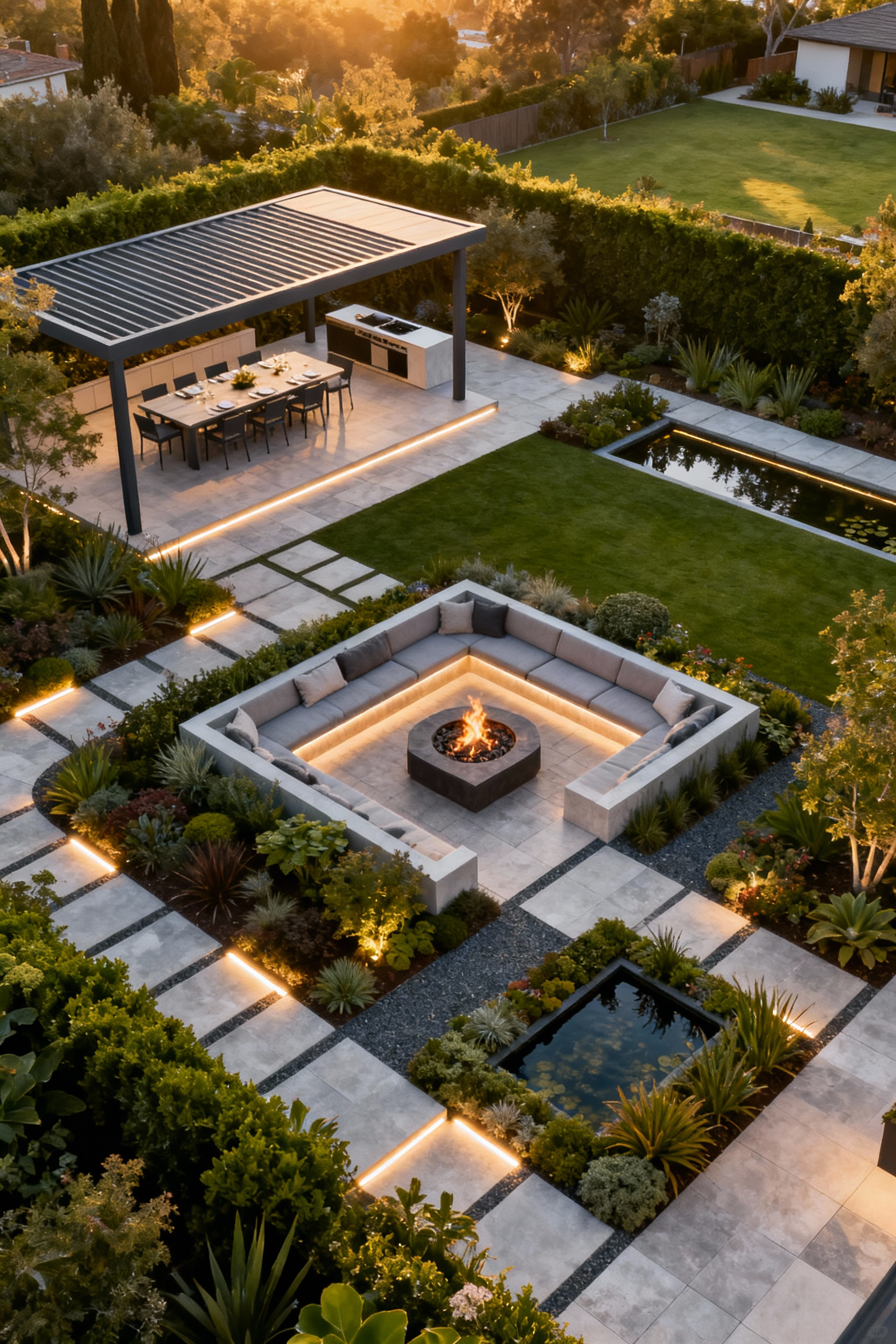
This level of planning prevents the patchwork effect where a backyard feels like a random collection of features. Instead, you create a cohesive experience. Pathways flow logically. A cooking zone is convenient to the house. A quiet seating area is buffered from noise. From my professional experience, a solid master plan is the difference between a pretty yard and an exceptional outdoor living space. It’s the foundational document that ensures every future decision contributes to a single, unified vision.
12. Incorporate Architectural-Grade Hardscaping Materials for Enduring Aesthetic Appeal, Structural Integrity, and Reduced Maintenance
Your hardscaping—the patios, walls, and pathways—is the skeleton of your outdoor space. Investing in architectural-grade materials is an investment in permanence. This means looking beyond basic concrete pavers to materials like natural stone (bluestone, travertine) or large-format porcelain pavers. These materials offer a timeless beauty and develop a rich patina over time.
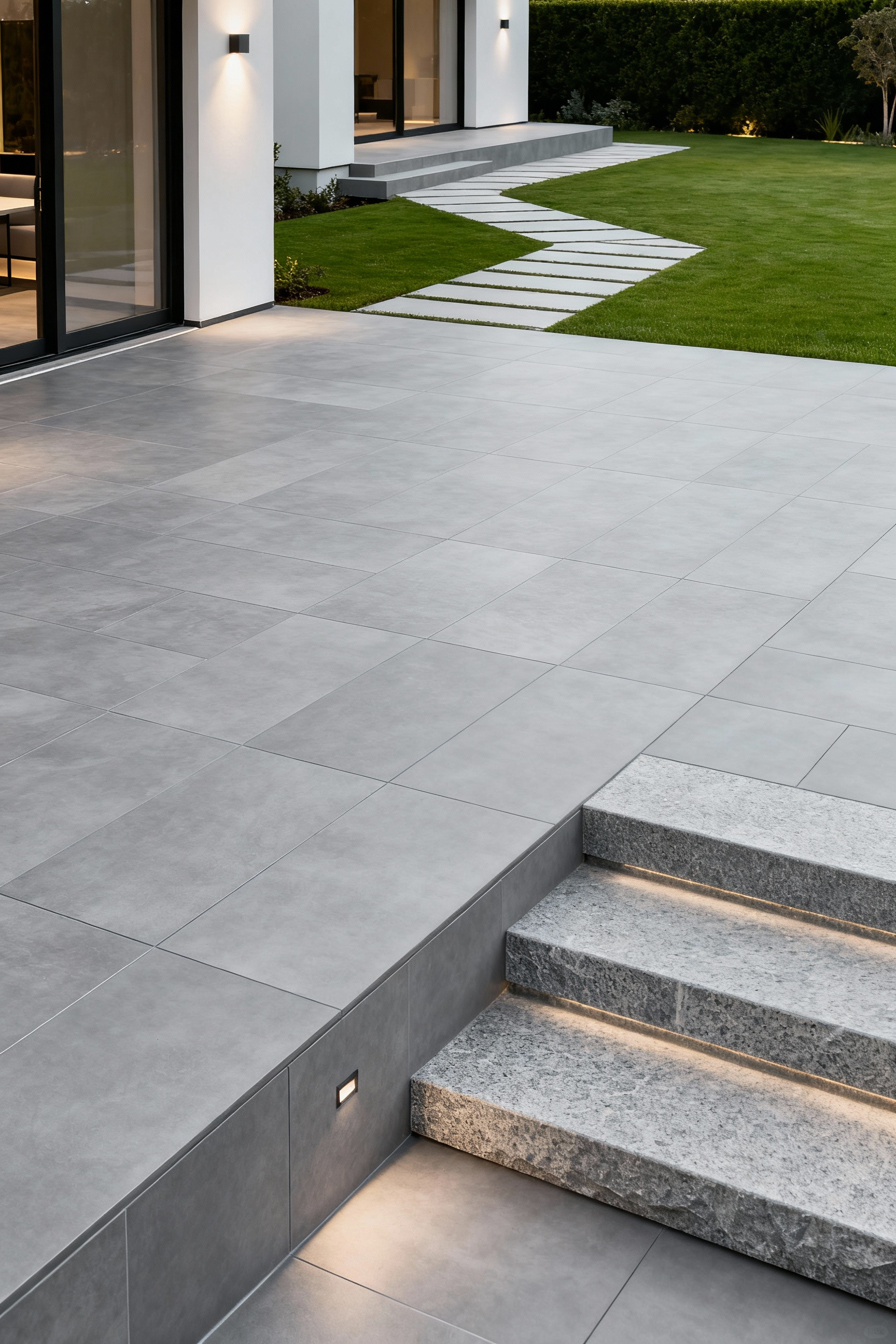
While the upfront cost is higher, their longevity and low maintenance pay dividends for decades. They resist cracking, fading, and staining in a way cheaper materials simply can’t. A professionally installed bluestone patio won’t just last a lifetime; its beauty and character will deepen every year. This is about choosing materials that anchor your design with a sense of quality and substance.
13. Design and Implement a Rainwater Harvesting System for Self-Sustaining Garden Irrigation and Reduced Water Utility Dependence
Imagine your landscape hydrating itself. A rainwater harvesting system makes this possible. We’re moving beyond a simple rain barrel here to a fully integrated system. Runoff from your roof is collected, filtered, and stored in larger cisterns—which can be hidden underground—and then distributed to your garden through a high-efficiency drip irrigation system.
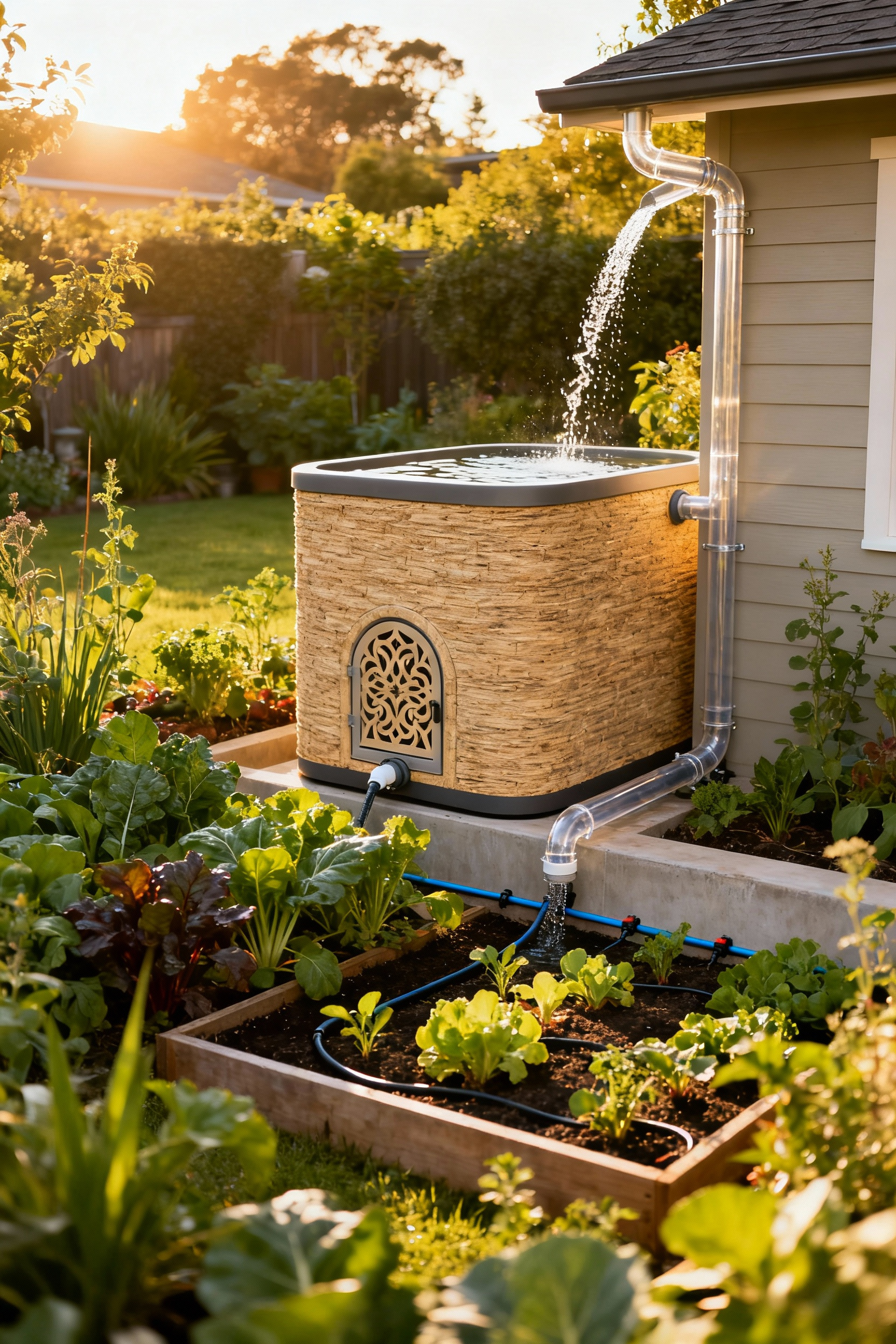
This creates a closed-loop system that dramatically reduces your reliance on municipal water. Better yet, rainwater is naturally soft and free of chlorine, so it’s healthier for your plants. A comprehensive harvesting system is a powerful statement about sustainability and resilience. It’s a sophisticated piece of ecological engineering that allows your garden to thrive, even during dry spells, using a resource that falls freely from the sky.
14. Implement Advanced Subsurface Drainage Solutions to Effectively Manage Surface Runoff and Prevent Soil Erosion
What happens to water you don’t collect is just as important as what you do. Poor drainage can lead to soggy lawns, eroded slopes, and even damage to your home’s foundation. Advanced subsurface drainage is the unseen hero of a high-functioning landscape. This is about more than a simple French drain; it’s a strategically designed network of perforated pipes, dry wells, and bio-swales.
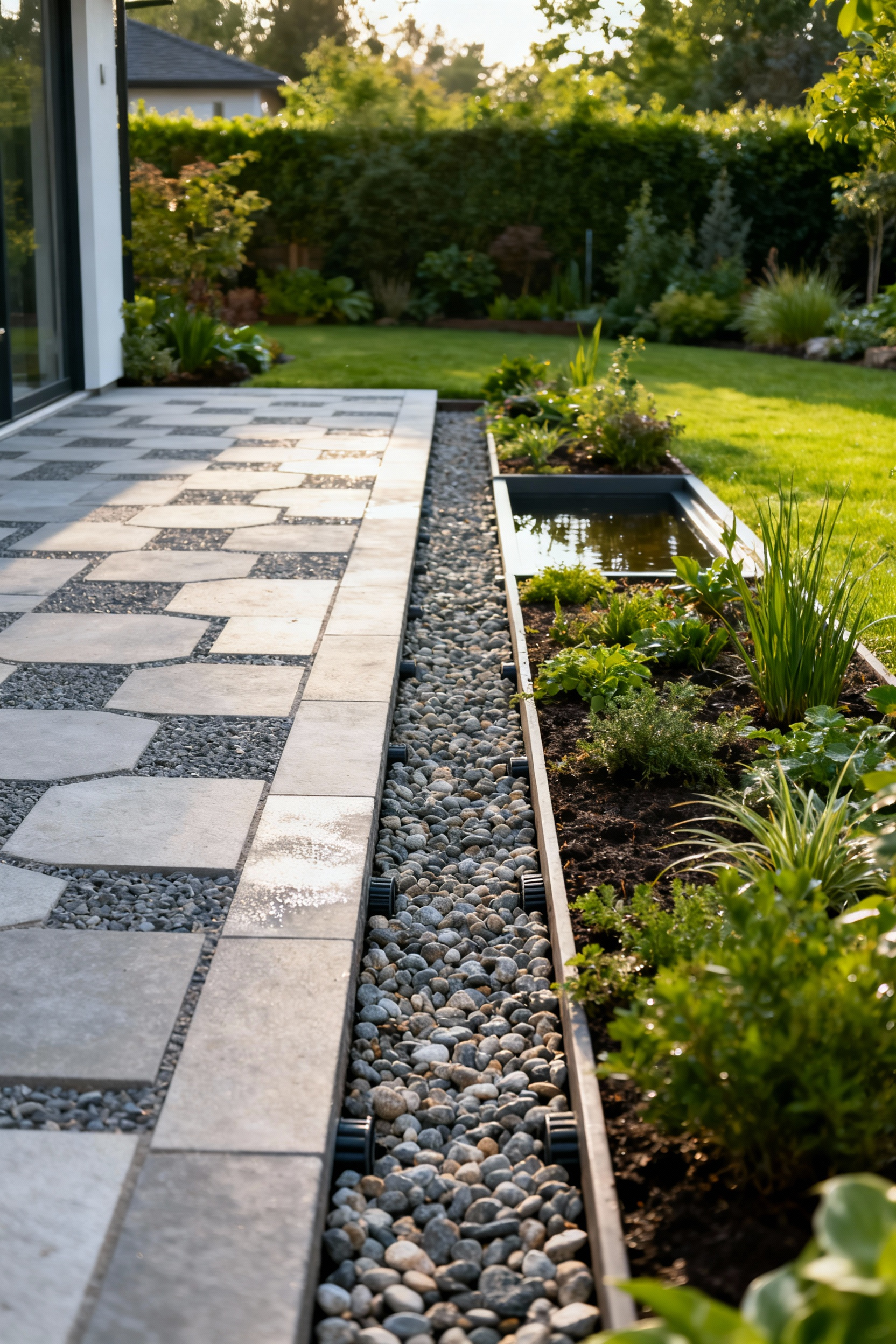
A properly designed system intercepts excess water and directs it safely away from structures, allowing it to slowly percolate back into the soil. It works silently underground to prevent pooling, protect plant roots from rot, and maintain the structural integrity of your patios and retaining walls. This is the critical infrastructure that ensures the long-term health and stability of your entire backyard.
Advanced Ecosystem Integration: Professional Backyard Strategies (Part 2)
This final stage of integration focuses on comfort and creating truly unique, personalized spaces. It’s about leveraging climate-smart design and bespoke craftsmanship to create an outdoor environment that is not only functional and beautiful but feels deeply and personally yours, usable in almost any weather.
15. Strategically Integrate Built-in Outdoor Heating Elements and Fire Features for Year-Round Comfort and Extended Use
The goal is to make your backyard comfortable for more than just a few months a year. Built-in heating elements are the key to unlocking true four-season outdoor living. I’m not talking about a portable patio heater you drag out of the garage. I mean intentionally designed features like overhead infrared heaters mounted in a pergola or a grand outdoor fireplace that serves as an architectural anchor.
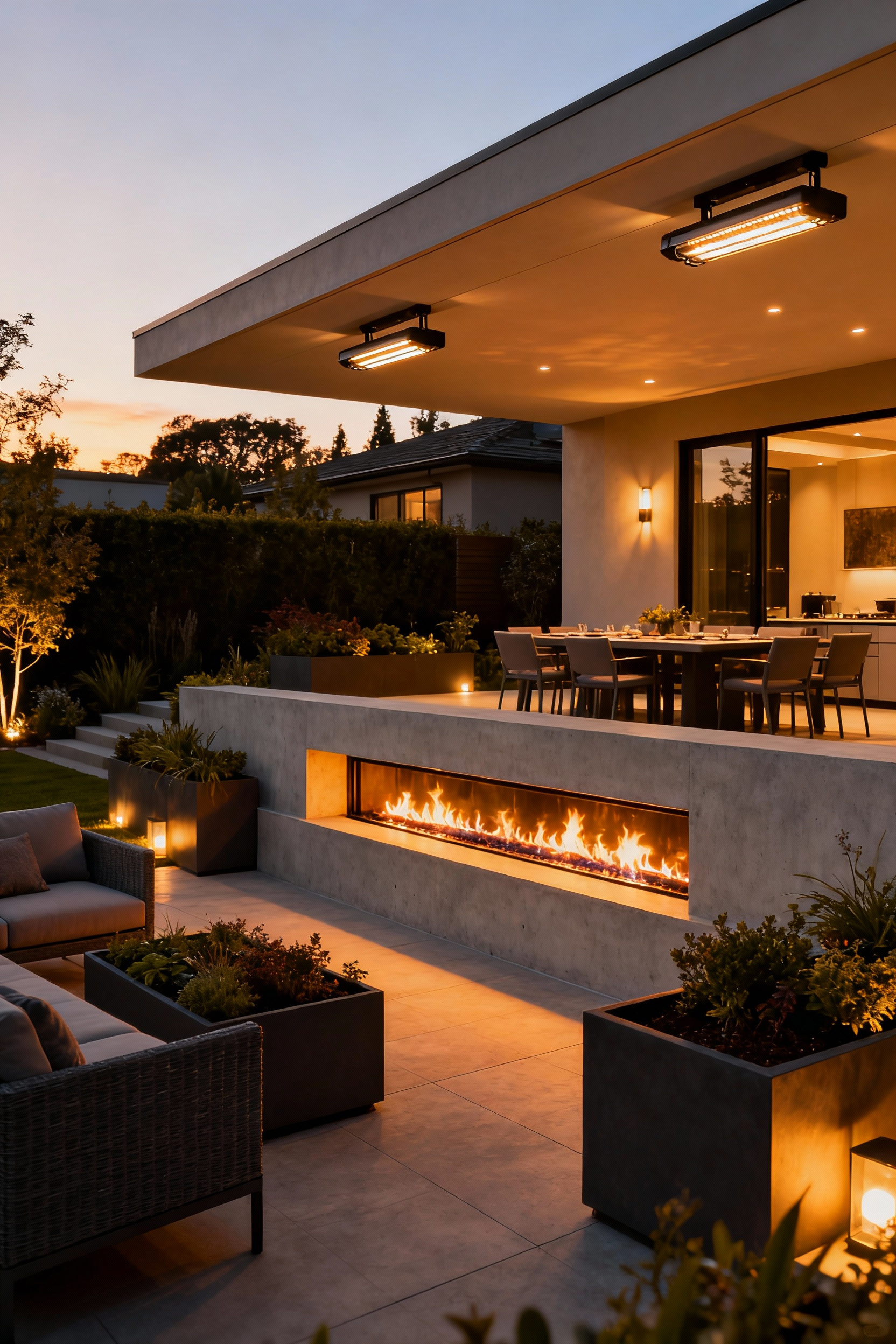
Strategic placement is everything. By analyzing wind patterns, you can create sheltered microclimates where the warmth is retained. A built-in fire feature becomes a magnetic gathering point, drawing people outside on cool evenings. When these elements are integrated into the master plan from day one—with permanent gas lines and thoughtful material choices—they transform your patio from a seasonal space into a year-round destination.
Mastering Bioclimatic Design: Expert-Level Backyard Integration (Part 1)
This is the pinnacle of outdoor design: shaping your environment to create natural comfort. Bioclimatic design means working intelligently with sun, wind, and shade to create a backyard that is naturally cooler in the summer and warmer in the winter. It’s about creating a responsive, high-performance landscape.
16. Implement Passive Solar Design Principles Through Strategic Evergreen Planting and Architectural Shading Structures to Moderate Temperatures
This is about using nature and architecture as your climate control system. Plant deciduous trees on the south and west sides of your patio; their leaves provide dense shade in the heat of summer, but their bare branches let the warming winter sun shine through. Use evergreens to the north as a windbreak, shielding your space from cold winter winds. It’s an elegant, living solution.
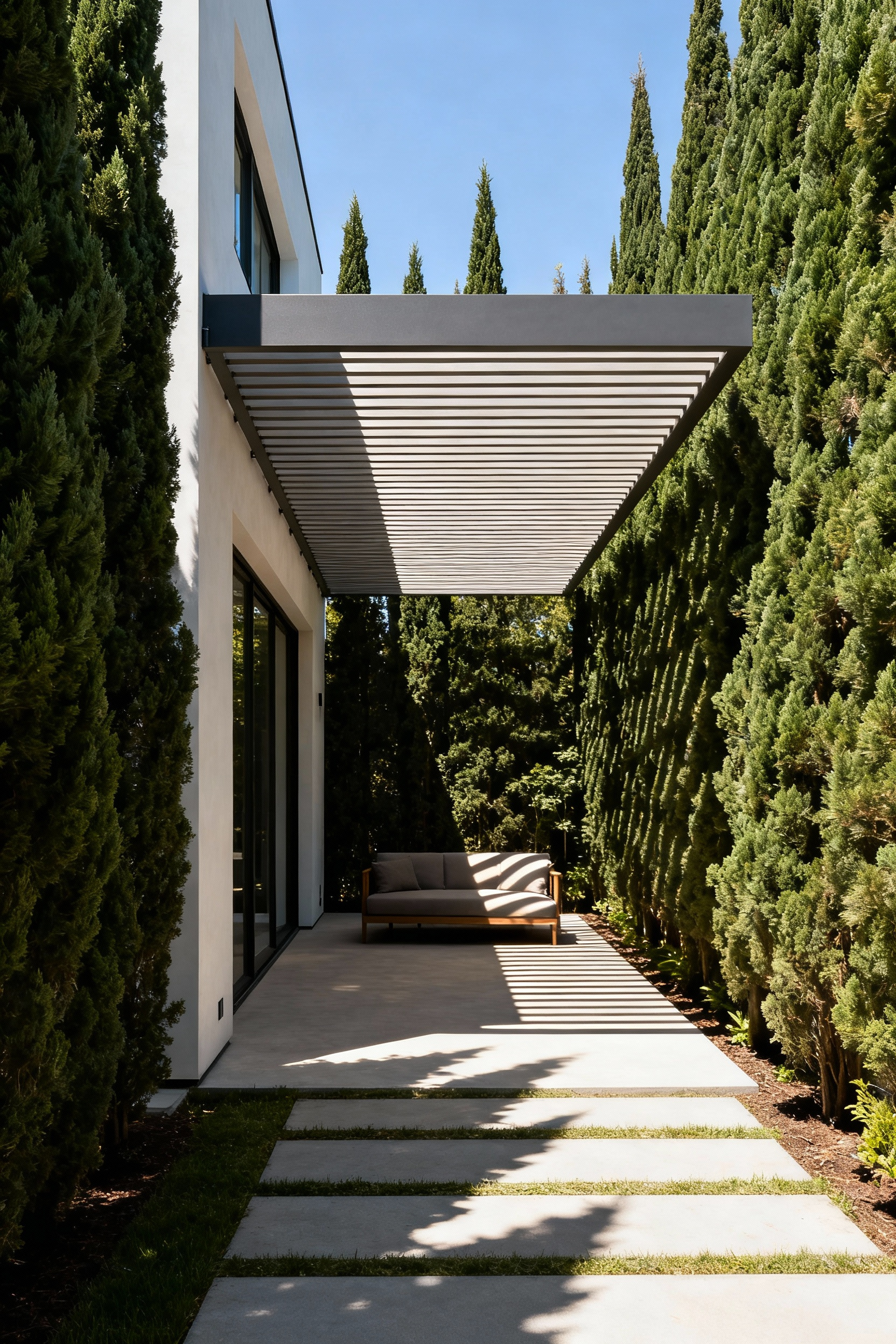
Combine this with architectural shading. A pergola with adjustable louvers allows you to dial in the perfect amount of sun or shade at any time of day. The materials you choose for your hardscape matter, too. Light-colored pavers reflect heat, while dark stone can absorb it and radiate warmth back into the space after sunset. By combining these strategies, you can significantly moderate the temperature in your outdoor rooms without any active energy use.
17. Design a Full-Scale Edible Landscape that Maximizes Diverse Food Productivity While Maintaining High Aesthetic Value and Biodiversity
An edible landscape is the ultimate fusion of beauty and function. Forget tidy rows of vegetables relegated to a corner of the yard. This approach weaves food-producing plants into the very fabric of your ornamental design. Replace a standard hedge with a row of berry bushes. Use espaliered fruit trees as living art against a sunny wall. Grow herbs as a fragrant, beautiful groundcover.

In my experience with garden room planning, the most successful edible landscapes are designed as food forests, mimicking a natural ecosystem with multiple layers: fruit trees, berry shrubs, perennial vegetables, and herbs. This creates a highly productive, biodiverse, and resilient system that requires fewer inputs and provides a continuous harvest. It’s a garden that looks stunning while it feeds you.
18. Incorporate Advanced Remote Monitoring and Control Systems for Outdoor Features, Including Lighting, Irrigation, and Audio
A truly modern backyard is a smart backyard. This is where all your systems—lighting, irrigation, audio, heating—are unified and controlled from a single interface, like your phone. It’s about more than convenience; it’s about creating a responsive environment. Geo-fencing can turn on pathway lights and your favorite playlist as you pull into the driveway.
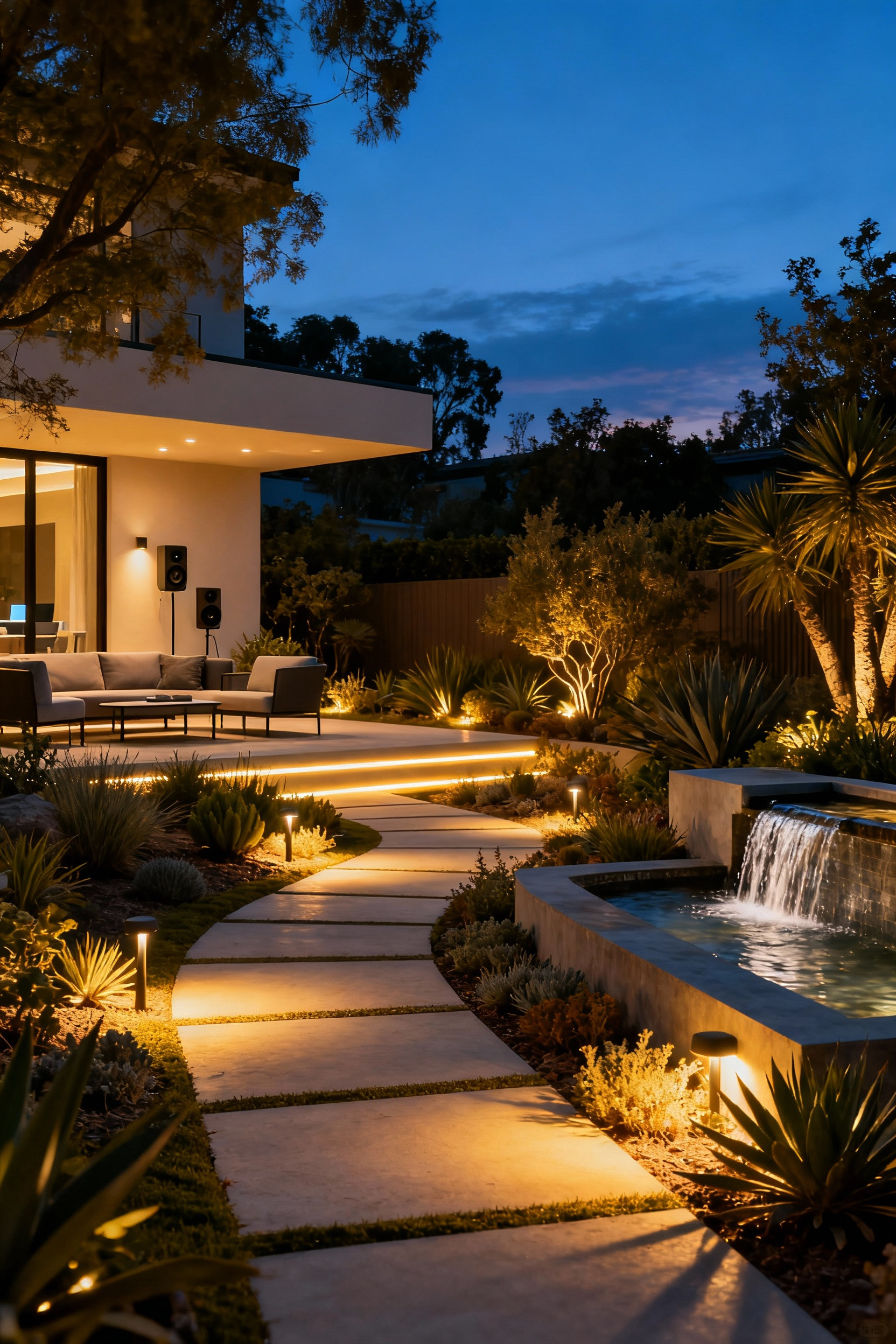
Mastery here means the system becomes predictive. It learns your habits. It analyzes weather data to optimize watering. It adjusts lighting based on the time of sunset. Voice commands like “prepare for dinner party” can trigger a preset scene, adjusting lights, fire features, and music simultaneously. This is technology used not for its own sake, but to create an outdoor experience that feels effortless and perfectly tailored to you.
19. Develop a Comprehensive Wildlife Habitat Plan to Foster Local Ecology, Support Pollinators, and Enhance Biophilic Connections
The ultimate goal of a nature-inspired design is to invite nature in. This goes beyond planting a few pollinator-friendly flowers. It’s about developing a comprehensive plan to provide the four cornerstones of a habitat: food, water, shelter, and places to raise young. This means planting native species that provide food year-round, from spring blooms to autumn berries.
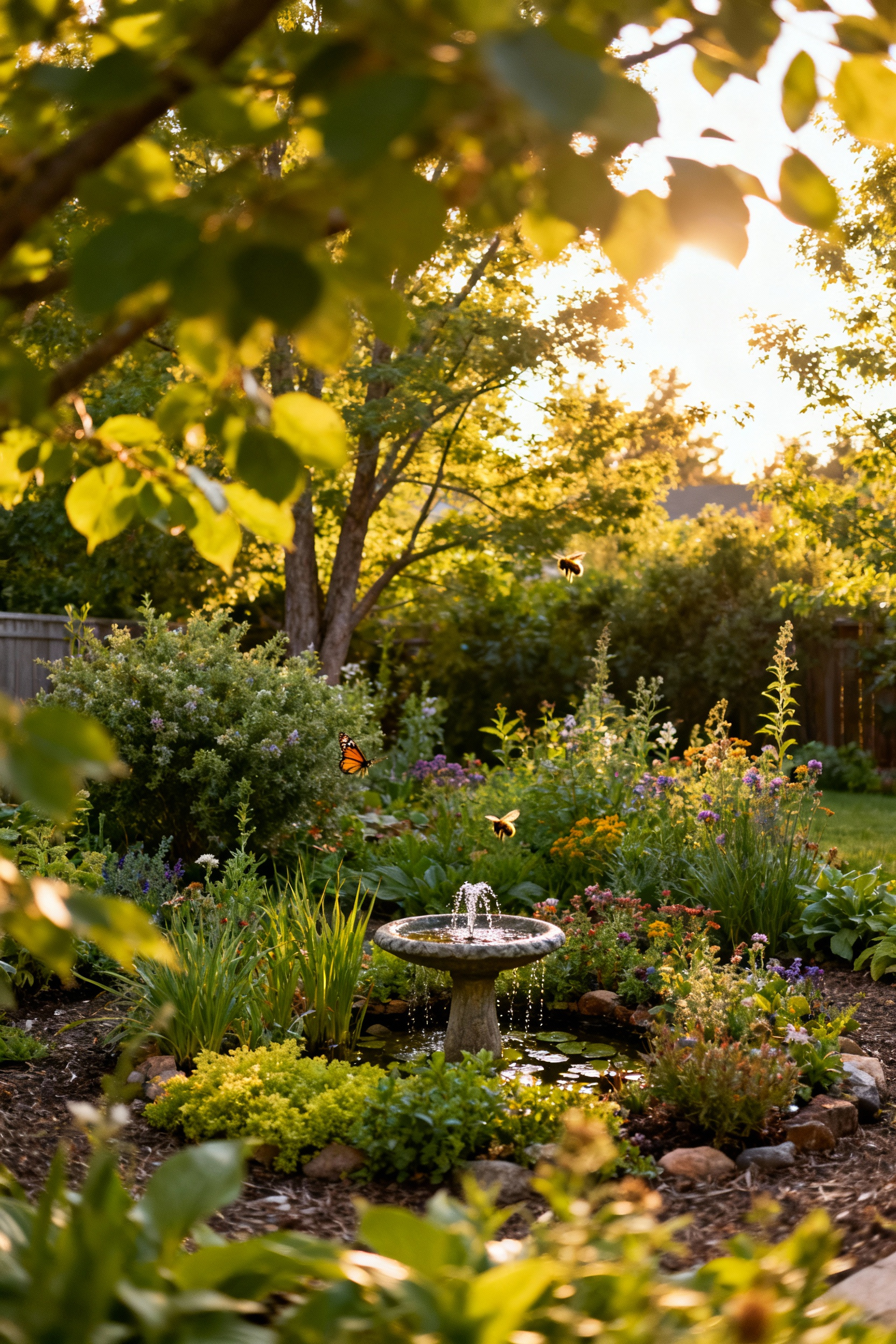
Integrate a source of water, even a small pond or bubbling rock, for birds and insects. Leave some areas a little wild—a brush pile or a log pile provides crucial shelter for small creatures. By designing your backyard as a sanctuary, you create a space that’s alive with activity. You contribute to local ecological health and forge a deeper, more meaningful connection to the natural world right outside your door.
Mastering Bioclimatic Design: Expert-Level Backyard Integration (Part 2)
Our final stop is about ultimate personalization. It’s where your outdoor space becomes a true reflection of your taste and a unique work of art. By moving beyond off-the-shelf solutions and embracing custom craftsmanship, you create elements that are perfectly suited to your home, your climate, and your lifestyle.
20. Engage in Bespoke Artisanal Fabrication for Unique Outdoor Furnishings, Custom Sculptural Elements, and Signature Water Features
This is where your backyard becomes one-of-a-kind. Bespoke fabrication means commissioning artists and craftspeople to create pieces specifically for your space. Instead of a standard patio set, imagine a custom-built dining table and benches made from reclaimed wood that perfectly fit your unique patio dimensions. Think of a sculptural fire pit made from weathering steel, its form echoing the lines of your house.

This approach extends to every element. A custom trellis can be designed to cast specific shadow patterns throughout the day. A signature water feature can be engineered to create the perfect acoustic pitch to mask nearby road noise. By engaging artisans, you’re not just buying objects; you’re investing in functional art that elevates the entire landscape, making it a deeply personal expression of style and a testament to quality craftsmanship.
Conclusion
So, we’ve moved well beyond the simple notion of a backyard as a patch of lawn. The journey from potted plants to a fully integrated bioclimatic ecosystem is a clear demonstration that your outdoor space holds limitless potential. These aren’t just 20 ideas to pick from; they are a roadmap for seeing your yard as an essential part of your home—a living space with purpose.
Start where you feel the most connection. Maybe it’s with lighting to extend your evenings or with native plants to invite nature in. Each thoughtful step builds on the last, creating a richer, more functional, and more beautiful environment. Your backyard is waiting. It’s not just land to be managed, but a space to be inhabited. Design it, build it, and live in it. The most sophisticated living you do just might happen beyond your four walls.
